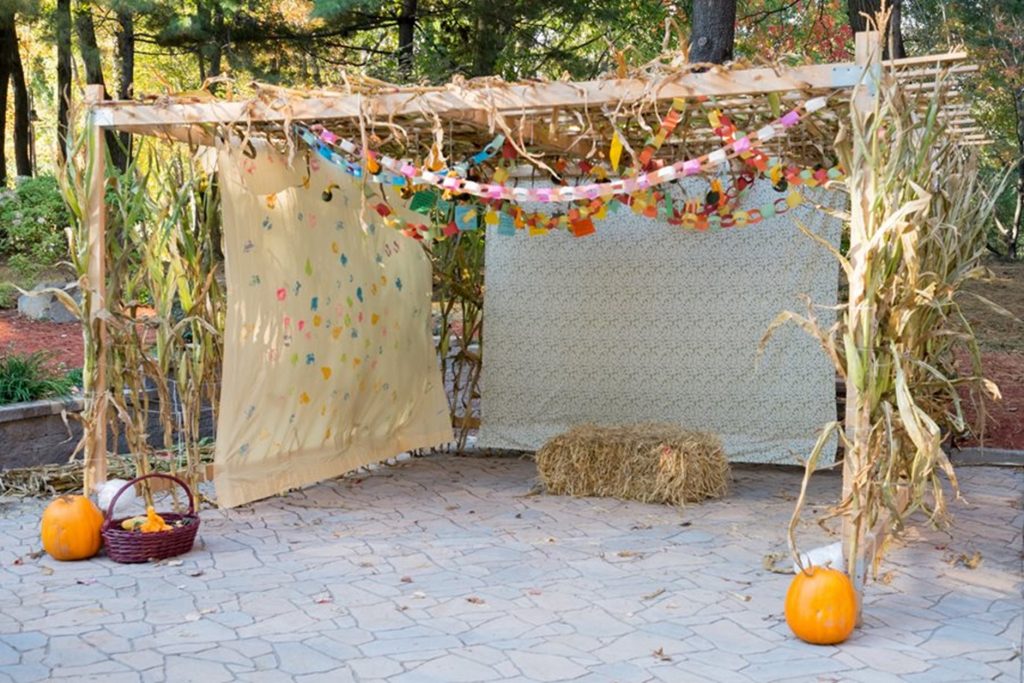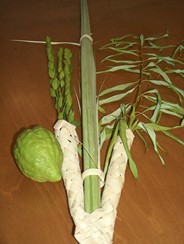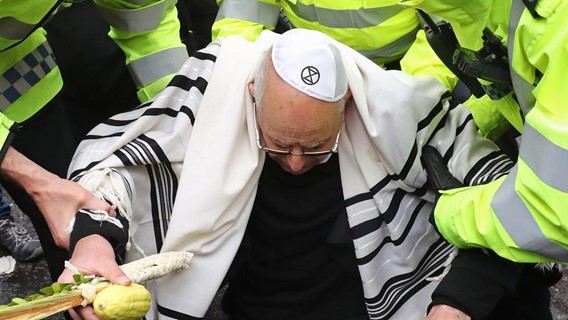Post contributed by Josh Newman.
The start of the academic year always coincides with a flurry of Jewish festivals. First up are the “Yamim Noraim” (Days of Awe) – often referred to as the High Holydays. They are a period of reflection and repentance that start with Rosh Hashana, the new year (actually one of four Jewish New Years – but that’s a different story!) and end 10 days later with Yom Kippur, the Day of Atonement. “Twice-a-year Jews” are those that go to synagogue only for these events.
Just a few days later, Sukkot (Soo-COT), The Festival of Tabernacles begins. It is a seven-day festival, and one of the three pilgrim festivals where in ancient times of the Temple (the second temple was destroyed in 70CE) people would come to Jerusalem with their harvest offerings.
Sukkot also commemorates the forty years of wandering in the wilderness between the Hebrews leaving Egypt (celebrated at the second harvest/pilgrim festival, Passover) and arriving in the Land of Israel. The third pilgrim festival, Shavuot (sha-voo-OT), takes place seven weeks after Passover and commemorates the revelation on Mount Sinai, when it is said that God gave Moses the Oral Law and the Written Law (Torah.)

A sukkah (Image: PJLibrary)
While the Hebrews travelled through the desert of the Sinai Peninsula, they used temporary housing, or sukkahs. So on Sukkot Jews build temporary tents, with no more than 3 walls. Often these are constructed against a house, like a temporary conservatory. Often people hang seasonal fruit and vegetables from the roof, which itself must not be fully covered – you are supposed to be able to see the start through the roof. The tradition is to eat meals and offer hospitality in the sukkah, and even to sleep in it.
The other tradition is to shake a Lulav (a branch from a date palm tree, held with a myrtle and willow branch) and Etrog (an aromatic citrus fruit that looks like an oversized lemon.) Shaking these four species in all directions (North, South, East, West, Heaven and Earth) is a way to ask for rain and a good climate for growing and harvesting food.

Lulav and Etrog (Image: Public Domain / Wikipedia)
Two years ago during Sukkot when Rabbi Jeffrey Newman (my father) was arrested for taking part in an Extinction Rebellion protest, he was holding the lulav and etrog as a reminder of our responsibility as guardians of the earth.

Rabbi Jeffrey Newman (Image: PA)
Sukkot is a 7 day festival (although Orthodox communities outside Israel observe 8 days) and is followed the very next day by one of the most joyous Jewish festivals – Simchat Torah (Rejoicing the Torah) where Jews celebrate finishing reading the Torah, and restarting the year-long cycle of reading the entire scroll.
For Rosh Hashanah, Sukkot, Simchat Torah – and indeed just about all Jewish holydays, the main greeting is “Chag Same’ach” – Happy Holiday!
